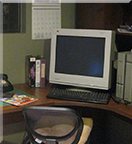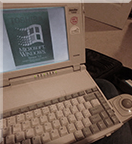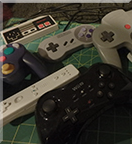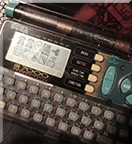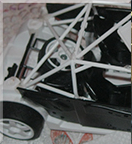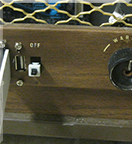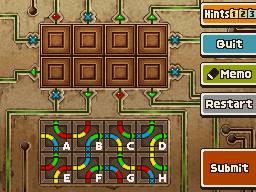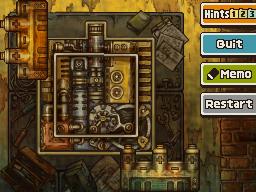My first time playing this game on real hardware.
I treat the SHARP and 90s game consoles very differently.
The SNES I'll carry it any which way. Power it off unsafely, leave it on for days, use the reset in an angry manner, be negligent with carts and so forth. Also, the fat PS2 has been taken apart and "repaired" (ask me in person if you want more details about this).
However, the SHARP is different. I move it very carefully and keep it upright. Touch nothing unless necessary. All disks must be either in the system, or in protective cases inside boxes. It must always be transported by me, in my car, in a cool temperature. And, minimize the number of FDD transactions.
That last one is the biggest one and it actively affects gameplay. I play in order to minimize the number of FDD reads and writes.
The death penalty in Lagoon is not high in terms of gameplay setbacks, but it is high in terms of disk switching. Dying will reset the game back into the starting area (disk 1), from which you will typically need to insert disk 2 or 3 to resume your save- that's 2 disk swaps. And starting the game from boot requires 2 swaps across both FDD0 and FDD1. (boot + data1 --> user + data1--> user + data2). And then of course 1 save == 1 write.
Put it all together, and you want to have few, long playthroughs. Try not to save too much, but also really try not to die. Don't unnecessarily venture into areas which are stored on a different disk.
Is all of this strictly necessary? Maybe, maybe not. Is this founded? I think so.
All the while playing through Lagoon there is this nagging feeling in the back of my head like my days playing it are numbered.
Like the raw number of FDD transactions it can do is finite. While this is true for any piece of computer hardware ever, there is reason to believe it's much more imminent on this machine. With every seek, every read, every grinding noise that comes out of the FDD- that brings it closer to no longer working. I was especially nervous at the in-game disk switching prompts (besides the boot disk and saved game disk, the game is spanned across 3 data disks). All this was despite the fact this unit has had capacitors replaced and that sort of usual stuff. Eventually, this machine will break down and then the only option will be an emulator compatible with contemporary PCs.
The other problem is media and loading it. This is my second copy of Lagoon. The first copy I obtained several years ago. When I tried to boot it, the boot disk showed CRC fail. The data disks couldn't be read. While this was a disappointment, it was not altogether a surprise. This happens with old disks and FDDs from that time period. It's not even uncommon now. Recently when I was playing with the TRS-80 with my coworker, we tried loading some games from the late 80s on 5-1/4" floppies. We had about a 10% success rate and blew out one FDD where it started to smoke so we unplugged it for the fire hazard.
I'm extremely lucky for having acquired fully working games with fully working hardware. There are a bajillion things that can go wrong with 5 1/4" disks stored away for 30 years shipped from the other side of the world. If I try and play this game again in 5 or 10 years, I might not be able to. I have a bad feeling about this computer. It has already started happening where it will power on, render corruption, fail to boot into Human68k. I'm going to stay positive, and reflect on the good times on this platform.
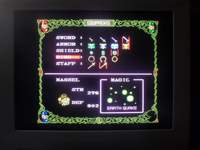
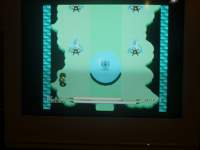
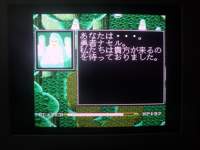


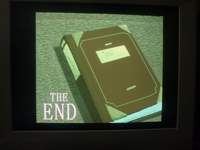
Boot and resume save at gold cave
Ending credits
Finished Pilotwings (SNES)
Is it possible to make a game entirely in Mode 7? Yes
Pilotwings is very earlygen SNES. It showcases the capabilities of Mode 7 graphics (texture-mapped plane which can be scaled/rotated/perspective transformed) to get something of a faux 3D. There are six flight modes: small plane, skydiving, rocketbelt (like a jetpack), hang-glider, helicopter, and some thing like a wing suit.
Defeating the first four courses unlocks the 'expert' mode, where the courses have some difficult twist (ice and snow, night, strong winds, etc) plus other difficulty adjustments. Clearing all expert courses clears the game
Too bad flight simulators are a dead genre. ("something something Microsoft Flight Simulator", Microsoft Flight Simulator is older than I am) ("something something indie games" . okay) Unfortunately I think that to make a flight simulator marketable nowadays, it needs to have combat elements incorporated. Thinking about it, the last-released flight sim I remember playing was Il-2 Sturmovik: Birds of Prey on Xbox 360 which had reasonable mainstream success. That one takes place in a war scenario obviously with the shooting mechanics you would expect.
Pilotwings did not make the cut for SNES classic but maybe the IP will get picked up for the Switch.



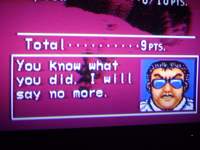

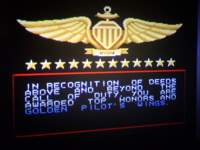


Finished Professor Layton and the Last Specter (3DS),
and the bonus game that the USA version ships with, Professor Layton- Little London
This is the fourth installment in the Professor Layton series. The puzzles seem, on average, easier (maybe too easy?) compared to previous installments. But there is enough variety to keep it interesting, and the side puzzles like the model train set are fun and worthwhile.
Little London looks and plays a lot like Harvest Moon, if you isolate it down to all of the cutesy character interaction and none of the turnip farming.
I have a big problem with Little London.
The mechanics of the game are as follows: you have two stats, Wealth and Happiness, whereby Wealth is accrued from working at jobs and fulfilling requests from the various townspeople; Happiness is acquired also by fulfilling requests, however-- when you buy anything that costs X, X/2 will be added to your Happiness. Therefore, after unlocking the highest Wealth-giving quests in the game (and also the train ticket job), it's just a matter of buying expensive things over and over and until you reach the Happiness desired. Optionally, you can sell things (for less than was paid for) and buy them again to streamline this grind late-game.
Is this the kind of value system we want to be broadly promoting to people? Materialism??
Your character begins the game with a home and basic needs met. The Wealth is just for buying frivolous things. New furnishings, new clothes. Cosmetic accessories. These are great, sure, but to directly, numerically link the resulting happiness they provide with how much they cost feels totally unrealistic. Am I going to be ten times happier with a $200 curtains compared to $20? Should I really spend $5000 on a golden stuffed animal? There are some material things I've purchased which made me *less* happy, for example the Lion King for Super Nintendo.

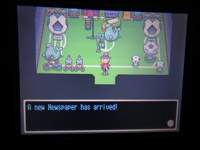

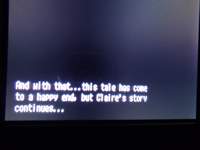

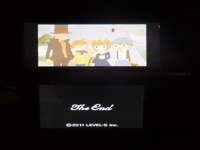
Ogre Battle is one of the best RTS franchises of all time. Which is surprising since it is a console game. You play as army leader <your name here> organizing a rebellion against an evil empire. The game consists of micromanaging how your army units are formed, where they go, who they attack. For each character in a unit, you pick out equipment, formation and role. Battles themselves play out automatically according to what attack policy you use, but you can also interrupt the flow of battle to issue some commands.
What makes this game so great is the gameplay and level of polish. The gameplay is complicated enough to be immensely replayable, without feeling bogged down by too many shoehorned-in mechanics. The polish comes from the nice pre-rendered backgrounds in the battle scenes, character and spell animations with a lot of frames and a lot of variety. Ogre Battle 64 really nailed this type of art direction imo, but MotBQ is where it all started.
The in-battle and out-of-battle gameplay are very different from each other- it changes from this customizable turn based thing to your typical RTS with an overworld map. The closest other game I can think to compare it to is Bahamut Lagoon (NOT Lagoon different game)
The game has thirteen different endings depending on decisions- some picky, some irreversible- you make throughout.
A long time ago, I rented this game repeatedly but I wasn't able to beat it. Some jerk rented it after me and over-wrote my save. IIRC they also named the overwriting character "BUTTS" or something dumb.
Other related titles in this franchise are Tactice Ogre- of the same "Tactics" genre as Final Fantasy Tactics, Dynasty Warriors Tactics etc- and Ogre Battle 64: Person of Lordly Caliber
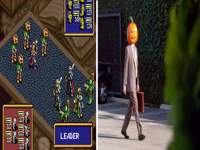

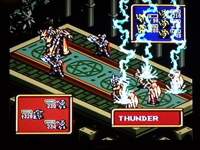
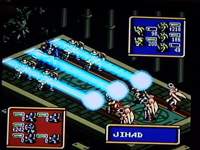

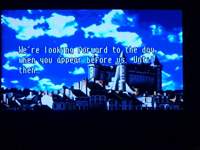
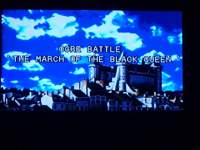
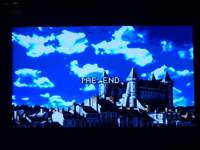

Finished Super Mario RPG (SNES)
Do you remember back when Nintendo's first party titles tried to push the limits of the current technology?
Since I had done the "finish all my Super Nintendo games I currently own" I bought this new one. This game was not technically new to me since I played it all the way through as a child but I wanted to re-visit it.
I'm of the opinion that this game is the spiritual precursor to Paper Mario. They share the same role-playing elements and comedic style. Before SMRPG- and not counting weird outlyer games like "Mario is Missing"- Mario was a side-scrolling platformer and that was basically it. This was a first in having a Mario game with a character-driven story, EXP and inventory management, and so on. It has a very disctinctive level of polish, and so I think Paper Mario went on to build on this idea later.
SMRPG- which is top-down isometric 2D- achieves a "3D-looking style" through pre-rendered 3D graphics and creative ways of having planes overlap each other. You would not guess that this game was for a platform optimized for copying 16x16 sprites since literally nothing appears to have square boundaries. So many things have curved, irregular edges and unusual types of blending. The sprites all look like shaded 3D models because they are (were). One other game that comes to mind which used these same techniques is Donkey Kong Country 1/2/3 but SMRPG has larger, more varied worlds and characters and so I think it represents a greater level of achievement.
Given the sizes of sprites and envrionment with the lack of repitition or content recycling, I have no idea how they were able to fit a game of this size into 32MB. Performance-wise it was one of only a handful of games that were accelerated by the SA-1 chip though.
The game uses QTEs in all fights which keep things from getting boring or too grind-y.
In this game someone from the Final Fantasy franchise makes an appearance. In this playthrough I beat Culex, an optional boss- for the first time. I can see why this was optional. This was harder than literally anything else in this game including the final boss.
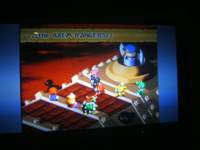
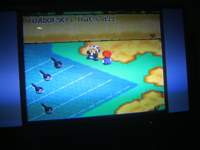
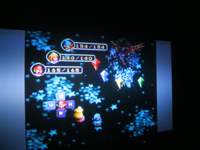
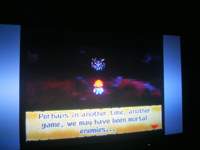
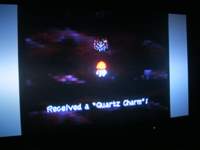
Finished Rocko's Modern Life, the SNES action game based on the '90s Nickelodeon cartoon.
I remember watching this cartoon thinking was pretty funny while also kind of gross because when I was little, I didn't like seeing eating of hearts, brains, etc. It looked really disturbing. Don't know if I'd find it gross now? Apparently the show also had lots of innuendos which had to have gone totally over my head at the time since I don't recall that.
The video game inspired by the cartoon is essentially escort mission genre. There are a bunch of puzzles and obstacles, and you must guide your silly dog Spunky to the goal (golden fire hydrant) at the end of each level.
Spunky moves indiscriminately, autonomously forward- but you can make him switch directions or pause in one spot for a short time, and manipulate the environment to affect where he goes. The game allows you to pause and view the entire map if you want, so you can plot out a course of which items and environmental features to use. Overall difficulty I think is low-med.
The environments and sprites are pretty sizable and visually consistent with the cartoon. There are lots of frames of animation in things. The game makes use of wavefile sound (actual voice clips). I don't have rosy nostalgia goggles for this cartoon, I don't have them for this game either, so it was just okay.
The game is not very long or difficult- I played basically the entire thing while on a Skype call with my mom. Now I'm finally running out of SNES games not-yet-beaten.
Maybe it's time to suck it up and get Ringed City.
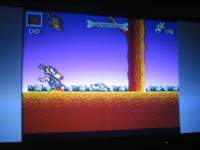
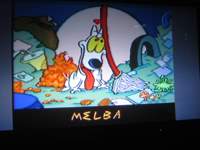



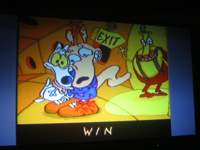
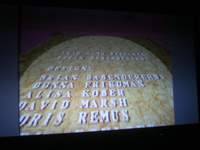
Finished Final Fantasy: Mystic Quest for SNES.
Released around the same time as Final Fantasy V, but it is a way lower level of technical achievement compared to the mainline Final Fantasy games from that time. It has very tiny sprites with two-frame animations, not very many maps. In terms of gameplay there are some things to like: no random encounters, and your character can jump and use a weapon to interact with the environment. The plot is kind of thin and forgettible.
Everything made sense once I read about the origins of this game. Apparently, this was meant to be an introduction of Final Fantasy to a wide western audience, including children, since in the late 80s, early 90s console RPGs had yet to gain as much traction in the west as they did in Japan. That requirement meant streamlining all the combat and equipment system, and having something more action-oriented in the map aside from just walking around. And, having characters that are simpler. They further reduced the difficulty and grind by making it so you can save anywhere, rather than fixed save points, and all battles can be re-tried.
FFMQ has one really good thing: the soundtrack. Unlike the mainline Final Fantasies from around that time, it was not composed by Nobuo Uematsu. So the music feels distinctly different. Less anime-ish and more old-live-action-movie-ish. It's almost at the point where a game like this does not deserve a soundtrack this good.
Some people call FFMQ the "worst Final Fantasy". Maybe it is but it is not worse than Final Fantasy XIII.
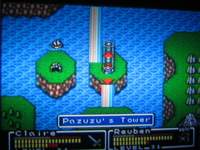


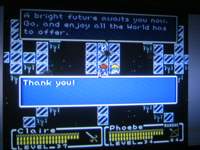
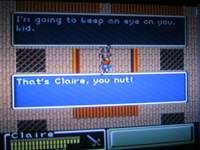
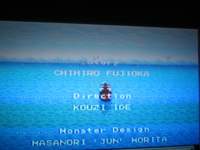
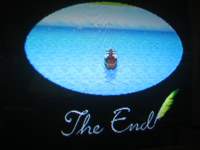
favorite music
Japan VS USA box art
Got all size+speed optimization challenges in Human Resource Machine!
Some of them are HARD.
I have new appreciation for being able to std::swap (in one expression), or use, like, any literals
And the ending. The reward is a creepy cutscene...
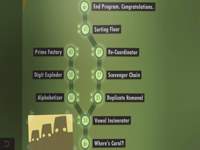

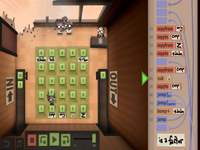
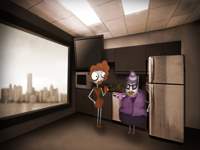
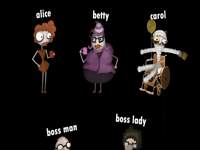
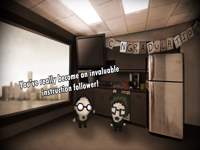

Got the Megalopolis in SimCity (SNES).
This is the original SimCity, slightly Nintendo-ified with references to Bowser and Mario and Dr. Wright of course. Unlike SimCity 2000, it doesn't have an isometric style, although there is a sort-of-3D effect in terms of 'tall' zones overlapping short ones.
The Megalopolis is the highest population ranking in the game at 500,000 people.
What makes it hard: unlike the newer SimCities, you have very limited space, and zones are 3x3 boxes with nothing smaller, so building optimally around coastlines is a problem.
The game takes pity on you as you begin to run out of space, bestowing upon you up to 7 3x3 landfills, so you can place up to 7 extra zones. A fully developed city is 500-900 zones, though. So it doesn't help much.
Optimizing for space is hard, ensuring land values remain high while all zones are crammed together as much as possible. Moreover, all zones need to be connected to transit- each zone should be touching at least one transit block develop beyond the minimal thing
Through experimentation I found out how to do some cheesy things-
- People don't care if there are literally no roads. Rails everywhere == no traffic
- Living next to disconnected 10-foot driveway of railroad running out of your backyard is sufficient as a commuting option
- Industrial zones around the borders because pollution going off the edge of your map 'doesn't count'
- Police stations don't need to be next to roads OR rails to be effective. They have helicopters or something
- All schools and hospitals == demolish on sight. Develop them into pure residential zones instead. No one cares
- Stacking and 'gift forcing' cheese.
Of course the city is called 'SF SOKYO'.
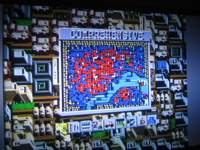

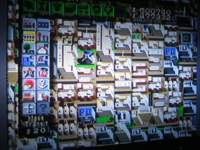
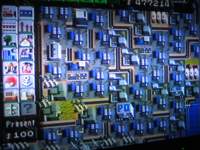
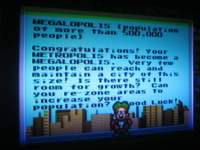
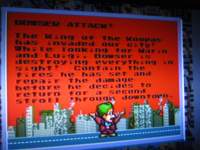
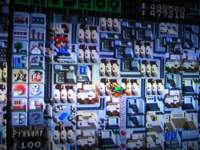
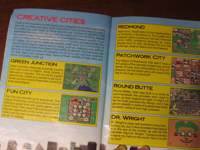
Not a bug, it's a feature:
Finished Pagemaster (SNES)
Do you remember this 1994 Macaulay Culkin movie? I had seen it a long time ago, this is the video game tie-in. It has the guy from Home Alone and when he reads some book he enters this alternate universe and there's cartoons / he becomes a cartoon. This another classic '16-bit movie tie-in platformer'- not quite as punishingly heard as some of the Disney ones (the Aladdin game, and the Lion King game, omg...) but gets up there.
The game trolls you a lot. For example, it might seem useful to grind lives for the last level. You would be wrong. You have effectively one shot to beat the last level. Why? Because at the end of the last level is a long, long path of lethal spikes, and- from all I can tell- you are supposed to take one long jump at the spikes, then carefully use I-frames to run that long remainder of the way and you barely have enough. You only have I-frames at all if you have an item to spare, it's Mario style where power-ups are the only thing shielding you from insta-death. And you res with no power-ups obviously. And there are literally no power-ups present in the level. On the condition that all of these things are true, you can have 99 lives for the last level, it won't matter- if you die you might as well hit the reset button.
One thing this game has, that I sort of miss, is some screen- could be the ending screen, could be the "I want to stop playing screen", doing a "while(1);" basically. It stalls forever. Accepts no input. That's where you just turn off the game.
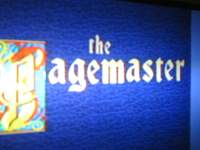
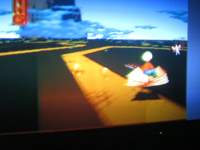
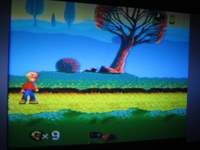

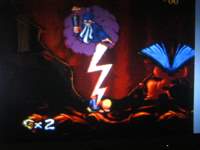

Separate topic, but I really like this type of ending screen with the while(1).
Pagemaster's ending screen does this. So does Chrono Trigger's and Super Metroid's and Super Mario RPG's and EarthBound's and Lagoon's and like every RPG from that era.
An an example besides ending screens, SimCity (SNES) has an option called END. The game stops and it shows a simple animation of a moon sleeping. It will do this forever and you just shut off the console. Looks like this.
That type of ending screen doesn't modernize super well... You can kill the game process but it just doesn't have that same "winding down" feeling. I like it because it's an option I can select when I really do want to stop playing, and there is nothing tempting me to go back and re-enter the game. Most importantly, the static nature of the screen takes me out of it.
Actually, modern MMOs- such as Blade and Soul, when I played it- do the exact opposite of this. If you select "Exit", there will be a waiting period of about 30 seconds just to make sure you're actually, actually sure. They probably have some argument about it curbing cheating or ragequitting but I think we all know the real reason. I would like to see more ending screens in games that just tell you good job, now shut it off and do something else.
